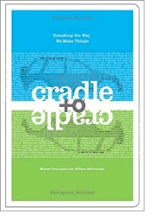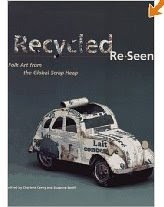Sustainability in design is very much dependent on the context in which the designer exists in. Ultimately primitive or indigenous culture is the best examples of sustainable design. However, it is unrealistic to expect the conditioning of Western societies to turn primitive over night. Therefore as designer we need to respond to the environmental and social context that we exist in.
For me a young designer living in Perth western Australia a concrete jungle surrounds me. Perth has an urban sprawl running effectively 100 km from North to South. It is unrealistic for all of inhabitants to abandon there homes and take up living in hollowed out logs, and sport the wears of a mere rabbit skin over the privates. As a designer it is unrealistic for me to start growing Pandanus leaves and weaving mats to feed the consumer habits of Perthites.
Instead I respond to my environmental context, and start re-using industrial waste. I pass sites of generic brick homes going up in generic suburbs and I raid the bin of these worksites and give the brick straps a second life. By using waste destined for landfill, I prolong the short life of a brick strap. The energy that goes in the producing a new raw sheet material is being saved because of the initiative I take. I am working with recycled materials, which may not be biodegrable at the end of there lifecycle. However, I feel that working with recycled materials. This is one way to work in a sustainable designer manner to respond to the consumerist context we live in and make use of our waste.
I work best with recycled materials. When something is free I don’t have hesitation to put my creativity to work. For the time being I have plowed into this project and experienced an overwhelming sense of ideas.
Where as if I work with a 100 % biodegradable fabric which cost 50 dollars a meter I am hesitant to put scissors to fabric. The dollars and cents scare the creativity out of me. However, to some degree this encourages and perpetuates the cycle of consumerism. However, for exhibition purposes I think I may well have to branch out into these fabrics to show a broader understanding of the sustainability topic.





















No comments:
Post a Comment